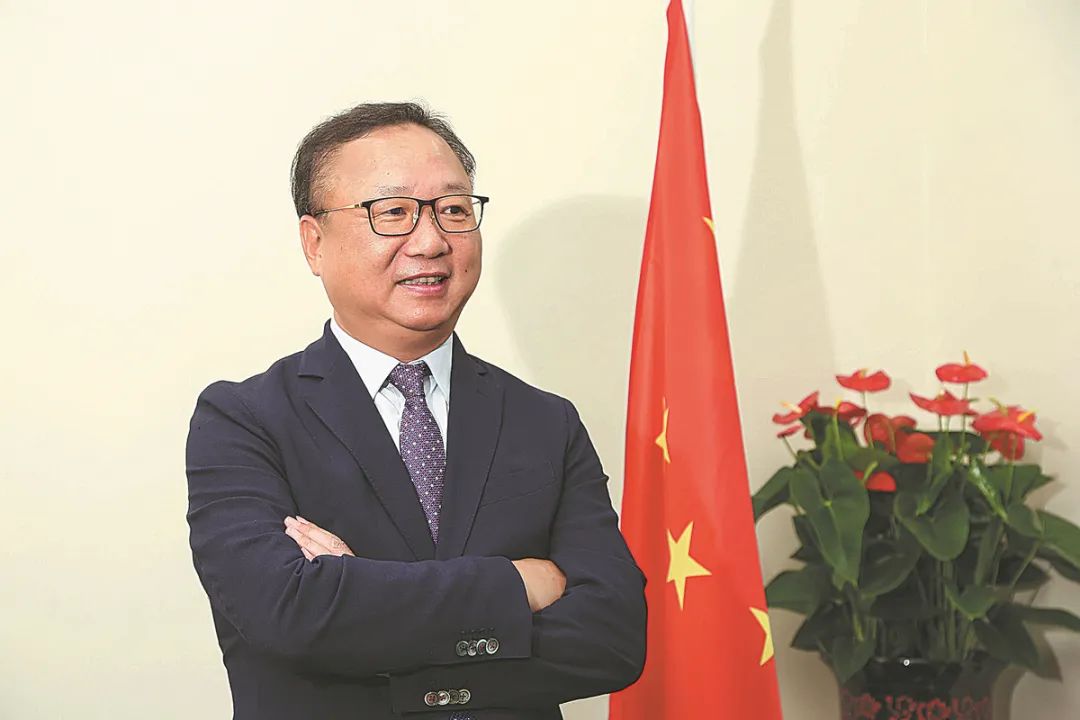China Daily专访国际纺联主席、中国纺联会长孙瑞哲:RCEP为中国纺织服装贸易织就新图景
China Daily专访国际纺联主席、中国纺联会长孙瑞哲:RCEP为中国纺织服装贸易织就新图景
2022年5月26日 CHIC中国国际服装服饰博览会_|上海国际服装展,上海服装展,2023上海服装博览会 日前,国际纺织制造商联合会主席、中国纺织工业联合会会长孙瑞哲接受《China Daily》专访,孙瑞哲表示,涵盖亚太地区15个国家的《区域全面经济伙伴关系协定》(RCEP),无疑为中国创造了更全面、更深入的区域产业合作机遇,这将为产业链和供应链多元化创造战略价值。
国际纺织制造商联合会主席、中国纺织工业联合会会长孙瑞哲 俄乌冲突持续紧张,我国对俄罗斯和欧洲的纺织品和服装出口面临直接压力。孙瑞哲表示,全球经济复苏的不确定性和地缘政治问题正在对我国的纺织服装行业产生深刻影响。 在这个背景下,原油、棉花等大宗商品价格居高不下,化纤、棉纺等下游企业利润空间被明显挤压。新冠疫情的反复和全球防疫措施的分化,降低了工业生产和物流的效率,削弱了市场信心和消费能力。 《区域全面经济伙伴关系协定》(RCEP)涵盖亚太地区15个国家。协定的生效,为区域产业更全面、更深入合作创造了新机遇。孙瑞哲指出,这不仅有利于对冲当前产业面临的经济贸易风险,而且对于产业链与供应链的多元化、全球化布局具有战略价值。 他补充说道:“RCEP不仅涵盖货物贸易,还涉及经济技术合作、知识产权等领域。先进技术、重要设备、关键零部件和新模式的引进,将加快全产业链的转型升级。” 根据中国纺织工业联合会的数据,今年一季度,我国的纺织品和服装出口同比增长11.1%,达到了722.5亿美元。受全球需求减弱和供应链问题等外部因素影响,行业运行指标预计上半年会有所回落。去年12月,美国通过H.R.6256法案,试图阻止新疆产品进入美国市场。此举也将严重影响我国棉纺织服装商品向美国市场的出口。 平台经济和内容经济的发展,推动着传统品牌升级焕新、新锐品牌涌现崛起。SHEIN、PatPat等电子商务平台风靡海外。生活方式、消费场景的变革加速市场细分和品类创新,为新品牌发展创造了空间。汉服热、国牌热成为当前“新国潮”的发轫。中国自主品牌进入了最好的发展时期。 孙瑞哲表示,除了促进数字经济与产业体系深度融合,我国的纺织服装企业还将努力开拓新市场、研发新技术,更好融入以国内大循环为主体、国内国际双循环相互促进的新发展格局。 RCEP weaves new relationships for apparel trade —China Daily’s interview with Sun Ruizhe, president of ITMF, president of CNTAC By ZHONG NAN | China Daily As the ongoing Russia-Ukraine conflict has put China’s textile and garment exports to Russia and Europe under direct pressure, Sun Ruizhe, president of the Beijing-based China National Textile and Apparel Council, or CNTAC, said the growing uncertainty of global economic recovery and geopolitical issues have had a huge impact on China’s textile and apparel industry. Moreover, affected by geopolitics, the prices of commodities such as crude oil and cotton remain stubbornly high, and the profits of man-made fiber and cotton textile production shrank significantly. Also, the repeated COVID-19 pandemic waves and global divergence in prevention and control measures have weakened industrial production and logistics, which, in turn, have weakened market confidence and consumer spending.
He said that the enforcement of the RCEP agreement, which covers 15 countries in the Asia-Pacific region, will create fresh opportunities for a more comprehensive and deeper regional industry cooperation. This will hedge against the current economic and trade risks and generate strategic value for the diversification of industrial and supply chains.
Under the framework of the RCEP, over 94 percent of textile and garment products from China to other members will eventually enjoy zero tariffs after a certain period, and the number is over 95 percent for textile and garment products from other members to China.
Sun said that the tariff reduction commitments, accumulative rule of origin and trade liberation and facilitation measures will be conducive to a closer relationship between China and other countries such as Japan in textile and garment trade.
“RCEP not only covers trade in goods but also engages in economic and technological cooperation, intellectual property rights and other factors. The introduction of advanced technology, important equipment, key components and new patterns will speed up transformation and upgrading of the entire industrial chain,” he said.
China’s textile and garment exports soared 11.1 percent on a yearly basis to $72.25 billion in the first quarter, according to the CNTAC. The council predicted that the industry will experience a slowdown in growth in the first half, due to external factors such as weak global demand and supply chain issues.
As the bill H.R.6256 passed by the US Congress in December 2021 attempts to prevent the importation of goods produced in China's Xinjiang Uygur autonomous region into the United States, Sun said this move will hit hard on the exports of Chinese cotton textile and garment goods to the US market.
Eager to enhance its earning strength and mitigate risks, the CNTAC and its member companies have made notable progress in both basic and applied research. The industry has shifted its focus from following others to keeping pace and even leading the way. Breakthroughs in technological bottlenecks have been made in the fields of new fibers, green manufacturing and textile machinery.
The development of the platform economy and content economy has fueled the upgrading of traditional brands and the emergence of new brands. E-commerce platforms such as SHEIN and PatPat are well-known in overseas markets. The changing lifestyle and consumer behavior have brought new markets and product categories for new brands. The love of hanfu-traditional Chinese dresses-and domestic brands has heralded a new trend known as guochao, a Chinese phrase referring to homegrown style. Domestic brands have entered a high-speed growth period.
In addition to facilitating the integration of digitalization into industrial development, Sun said China’s textile and garment companies will work harder on developing new markets via new technologies and the country's dual-circulation development pattern that takes domestic development as the mainstay, with domestic and international development reinforcing each other. |
